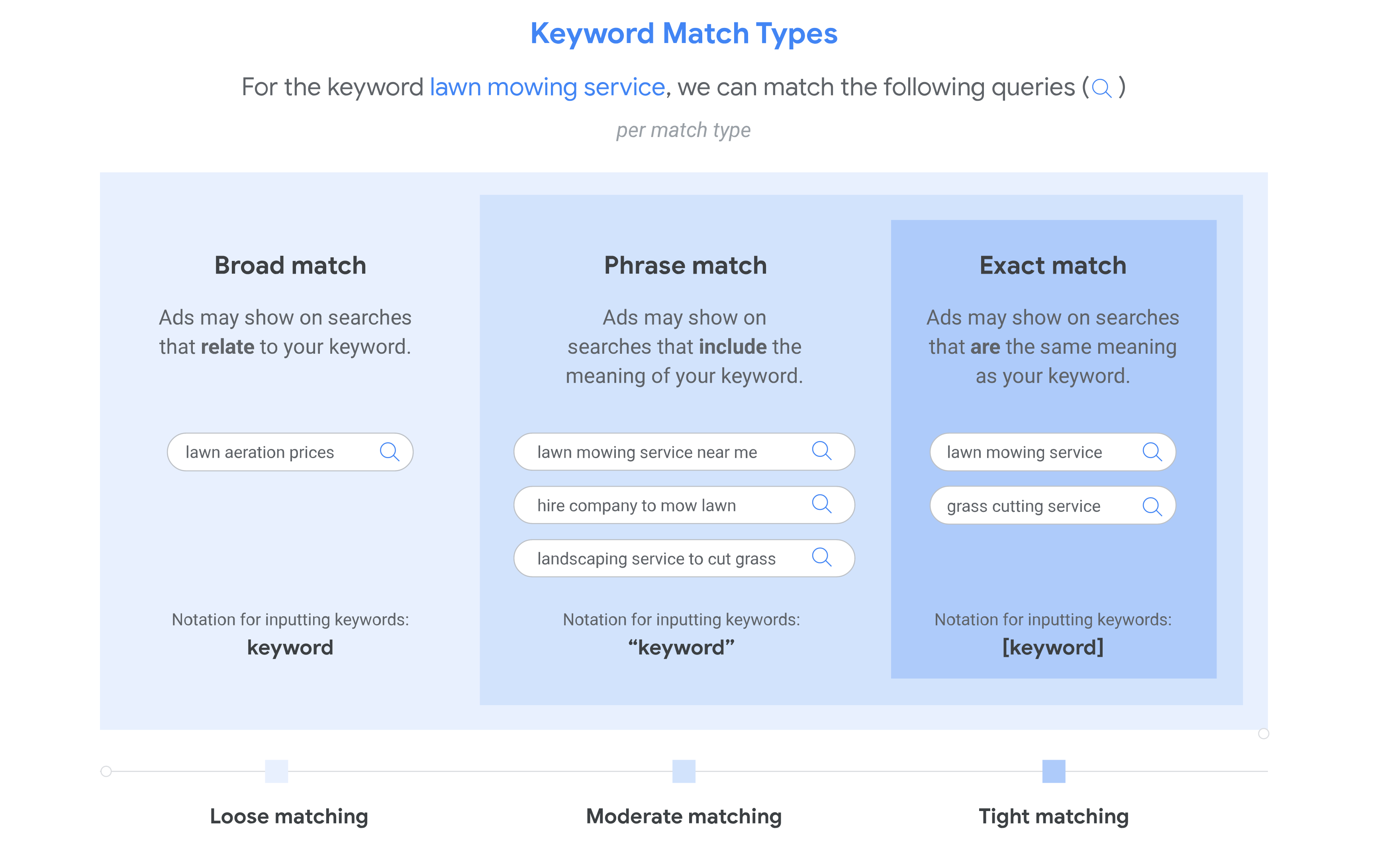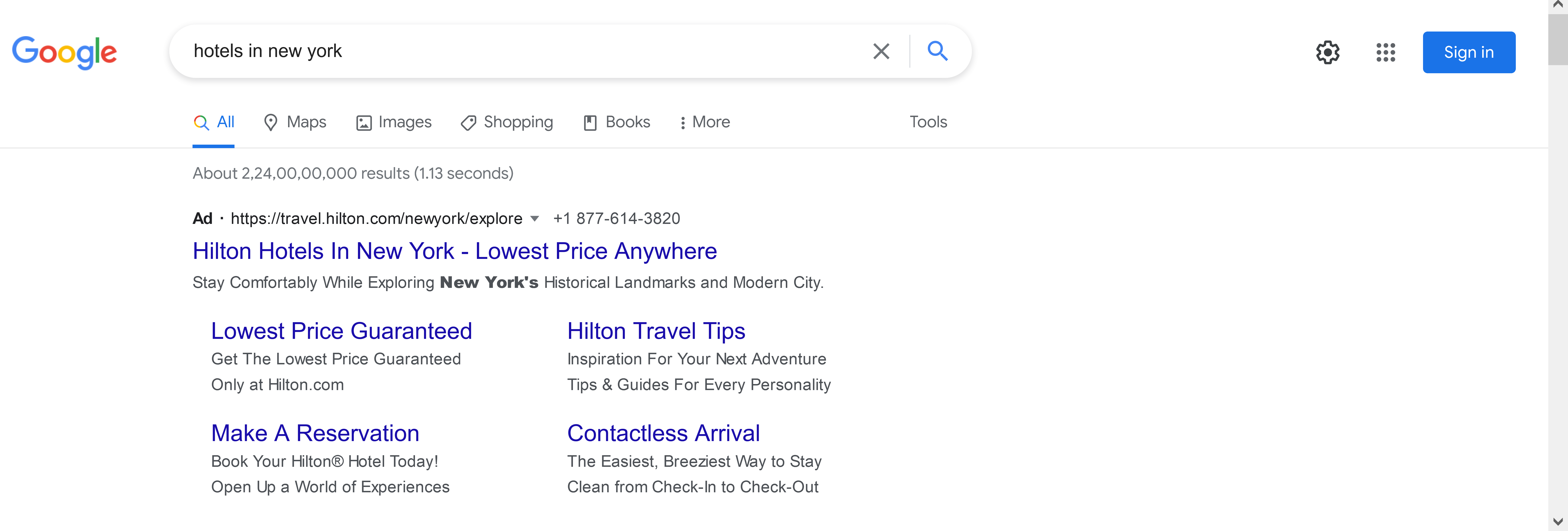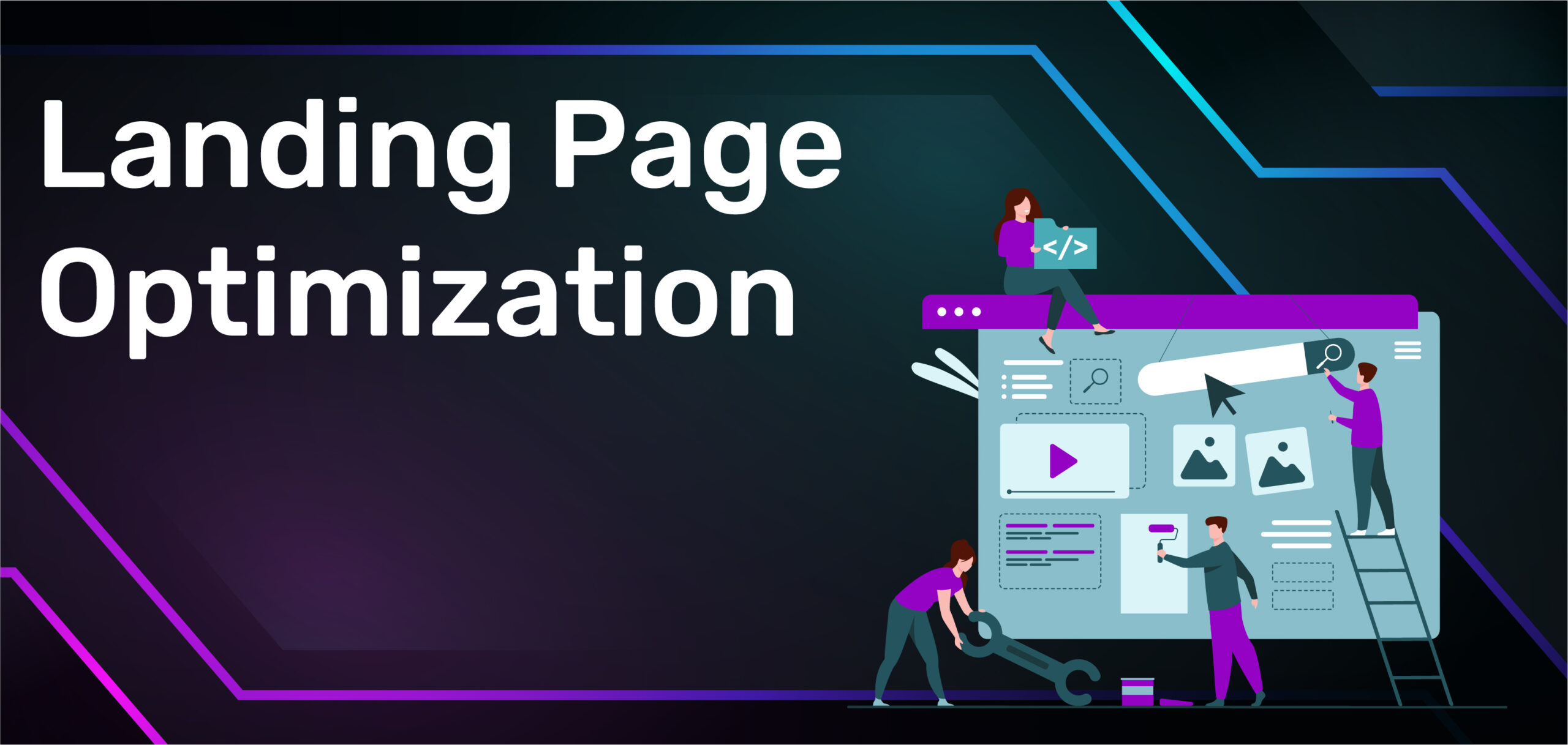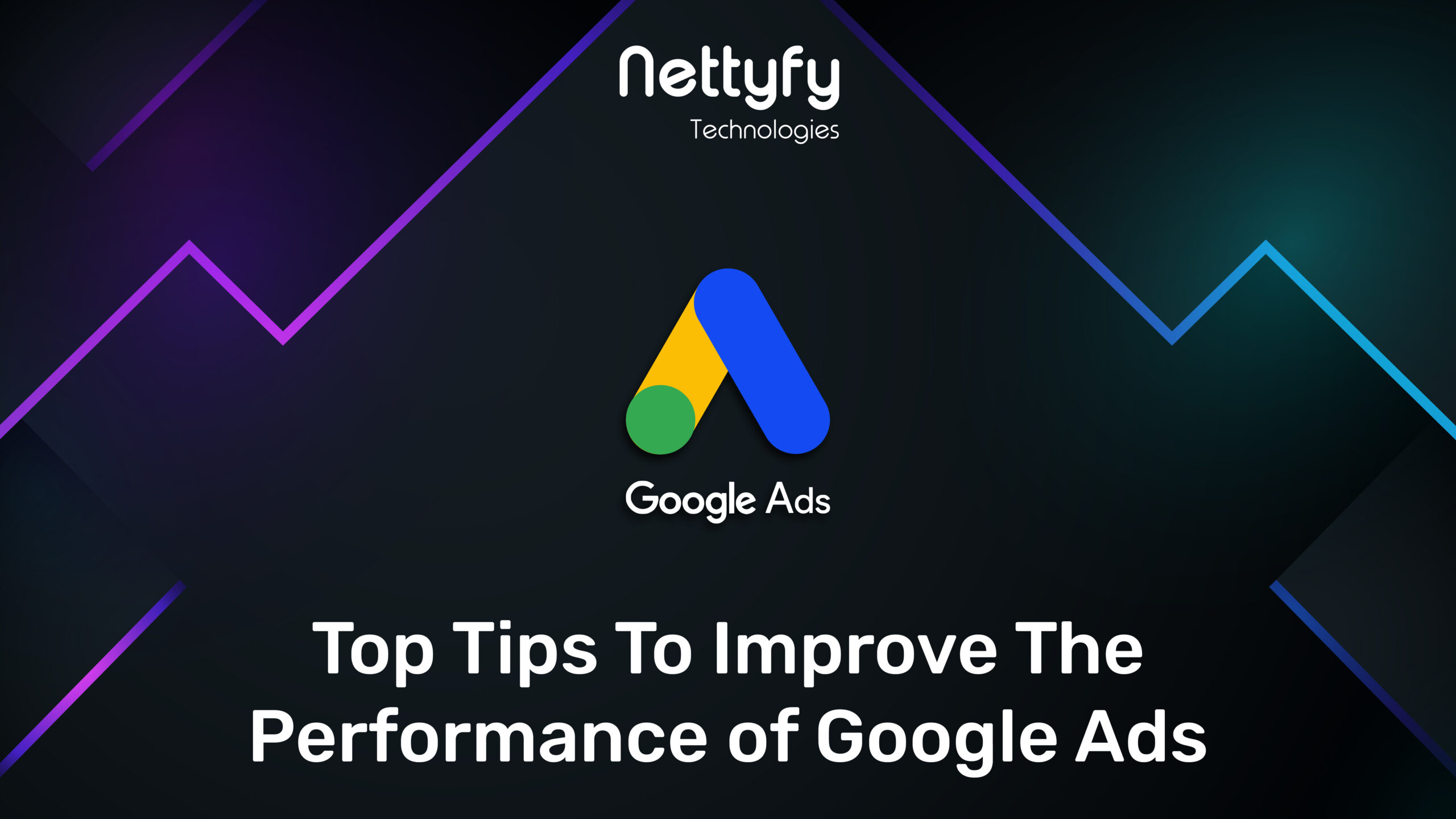Do you know the top tips to improve the Google Ads performance? Google Ads is a great way to drive traffic to your site to increase sales or quality lead generation. It is simple to set up and get started but can quickly burn your marketing budget if not managed properly. So with the help of Best PPC Management Company in USA, it requires you to optimize your campaign properly to get the best out of it.
In this article, we provide tips that will help you improve the google ads performance, click-through-rates (CTR), and conversion rates. This will ultimately lead to improved ROI. Let’s get started.
1. Keyword Research And Optimization
Any high-performing AdWords campaign starts with solid keyword research. Use of the relevant keywords is the success of google ads. Start by brainstorming your own list of keywords you think are relevant to your industry and do a competitor analysis on which keywords they are bidding and running ads. Make sure you select general keywords about what you do — like ‘Website Development’ — as well as keywords that describe which service you provide — like ‘Backend web development.
Google’s Keyword Planner is free to use and the best place to start your keyword research. Put your list into the Keyword Planner and you’ll get an expanded list of keywords along with the data of how often people search for them and how many competitors are also targeting those keywords.
1.1 Keyword Optimization
Review the list and eliminate irrelevant keywords. You need to identify and remove the keywords that generate clicks but not conversions. If you are providing services or selling products then select “money keywords” instead of informative keywords which generate leads and increase sales on your website.
2. Use Of The Negative Keywords
Add negative keywords to your campaign or ad group to prevent your ads from being shown for specific searches and help to improve google ads performance. This narrows down your targeting audience that will most likely buy your products or services and increase your conversion rate.
Here’s an example of how to use of negative keywords help web hosting company:
Let you use “website hosting provider” as a Broad match in a campaign to attract customers. Your ads could be displayed when people enter search terms like “free website hosting provider”. When a person clicks on this ad, money spent for the click is wasted because the searcher is looking for a free website hosting provider that does not add any value to our business. So adding “free” as a negative keyword prevents the ads from being displayed for searches that include that term.
2.1 Where To Add Negative Keywords In Google Ads?
You can add negative keywords at either the campaign level or an ad group level. The web hosting company mentioned above could list “free” as a negative keyword at the campaign level, meaning that none of the ads in that campaign would be displayed for searches that include the term.
Below are the advantages to add negative keywords in your campaign
● Increased CTR
● Reduce CPC
● Boost ROI
● Improve your quality score
3. Organize Similar Keywords Into Campaigns And Ad Groups
Don’t just copy and paste your list of keywords into one Ad group. It would be best if you organized them into campaigns and ad groups.
For example, website development, web design, and website development should all be in the same ad group. In contrast, digital marketing services, search engine optimization, social media marketing would be in another. Segmenting your keywords like this will make it much easier to analyze your data later.
4. Use Single Keyword Ad Groups
To get the best out of your google ads group, you can go a step further and only use one keyword per ad group, but combine the various match types. By switching to one keyword per ad group you can deliver specific and accurate ads for the keyword – this will improve your CTR, quality score and conversion rate, this will lead to reduced CPC and improved CPA. If you have hundreds of keywords, then the best place to start would be to move your top ten performing keywords into single keyword ad groups, create relevant ads for them and, if you can, direct them to specific landing pages.
5. Use Match Types For Keyword Targeting

Once you start bidding on different keywords, you’ll have the option to use different keyword matching options.
The keyword match types indicate how closely your keyword needs to match with the user’s search query in order for the ad to be considered in the auction. The choice of your match type may impact both your CTR and CPC, so be sure to choose wisely.
6. Add Keywords In Your Ad Headlines And Descriptions
After researching your keywords, it’s time to use it smartly in your ads for better performance. One of the main objectives of google ad copy is to increase click-through rate. An effective tip to boost your CTR is to use your ad group’s primary keyword in the headline and description of ad copy.
People are more likely to click on ads that contain the keywords they have just typed than ads without them. So the more relevant your ad is to the search query, the more likely you will attract the right searchers and increase your CTR.
7. Use Of Proper Ad Extensions
Currently, there are around 10 types of ad extensions. Usually, not all of them are applicable to every campaign you’ll run; however, if you’re not taking advantage of all the different extensions, you’re missing out. Using the full range of extensions increases the size of your ads and makes them appear more relevant, which you’ve guessed, improves the click through rate. There are other benefits as well, see 5 ways google ad extensions can improve your Ad words campaigns and google ads performance.
Below are some of the most commonly used ad extensions.
● Sitelink Add Extensions
● Call Extensions
● Promotion Extensions
● Price Extensions
● Other Ad Extension Types
7.1 Sitelink Ad Extensions

A sitelink extension is an extra line of text that displays when your adverts appear in the top three positions. They look similar to organic search sitelinks that appear when you search for company names.
Adding sitelink descriptions to your campaign or ad groups allows you to add two extra lines of text under each sitelink heading and is shown to improve click through rates. By using this feature your adverts stand out and push down other adverts in the paid search results.
7.2 Call Extensions
Similar to site links, adding call extensions to your adverts makes it easier for people to get in touch. This is ideal for businesses where customer calls are common in the sales process. The major advantage of call extensions is that people can click to call using either their mobile device or by using software such as Skype on a desktop.
If you set up a Google phone number when creating your call extension you can record calls as a conversion in AdWords if they last longer than the call duration that you specify. Call extensions also make your adverts stand out and encourage those fingers to click.
7.3 Promotion Extensions

A promotion extension allows you to highlight special offers or deals , and it displays below your ad. There are 4 types of promotion extensions: monetary discount, a percentage discount, up to monetary discount, and up to percentage discount. It can be for promotions for a specific period, for example this ad is for up to 50% discount running over the Easter holiday:
7.4 Price Extensions
Price extensions provide additional links in your advertisement that will take users directly to a specific product page.
Price extensions can be used to display different pricing tiers (see example below) or different levels of service offering.
Including price extensions improve your quality score and will improve your click-through rate by making the information users require quickly and easily accessible.
7.5 Other Ad Extension Types
Many other extension types include callout extensions, lead form extensions, location extensions, structured snippet extension, affiliate location extension, and app extensions. Depending on your advertising objectives, these will all help to increase the number of people clicking on your ads.
8. Properly Bid Adjustment
Not making bid adjustments is a huge mistake. On the other hand, making too many bid adjustments all at once can be a nightmare.
To be successful with the adjustments, you need to know when to make them and how big they should be.
Before you decide to add any bid adjustments, you should have at least a month of account history to review. This will ensure that you have enough data to back your decision. Then you want to start with the most impactful bid adjustment opportunities.
Remember bid adjustments are exponential meaning you could end up bidding way more than you want to if you’re not careful. The best way to avoid this is only to apply one bid adjustment each optimization period. After a week or two measure the impact and make changes as needed. Once you’ve dialed in one area, move on to another opportunity.
For example, you can start by adding bid adjustments on the device level. If mobile devices get you cheaper conversions than desktops you can apply a mobile device bid adjustment. After a week or two, check back to see if your adjustment has led to more mobile conversions.
9. Landing Page Optimization

You could be ticking all the boxes as far as AdWords optimization is concerned and driving huge amounts of traffic to your site, but still see no conversions if the landing page the searcher sees is not engaging. You need to ensure your landing page pushes the message you are communicating in your ad, but you also need to go a step further. Split-test your landing pages; try new designs, different CTAs, vary the headlines and offer lead magnets. Each change will see either a negative or positive impact on your conversion rate, keep the best performing elements until and in parallel, you can bid harder on keywords as you will be confident that you will get ROI. Landing page plays a important role in google ads performance.
10. Use Location Targeting & Exclude Poorly Converting Location
You are aware of where your audiences are. Location targeting plays a major role while creating google ads. If you provide services within a confined geographic area, make sure your campaigns are set to display ads only to searchers within that area. Otherwise, you’ll end up paying for clicks from people who you can’t provide services for.
11. Power Of Remarketing

Remarketing is a great way to reach out to your potential customers again and again. You’re targeting those who have already visited your site with an ad to convince them to sign-up, purchase or purchase again. They are a highly targeted audience to convert for your service or product.
Different types of remarketing ads:
● Standard Remarketing
● Dynamic Remarketing
● Remarketing for Mobile Apps
● Video Remarketing
● Email list Remarketing
12. Track Everything
Make sure you have Google Analytics or Google Tag Manager installed on your website. We install tracking code for all of our clients. We need to analyze google ads performance constantly and plan our marketing accordingly.
Google Analytics will help you measure bounce rates, time spent on site and conversions – you can make informed decisions about your AdWords activity. Using these data, you can plan your future campaign or make changes in currently running for better performance. Also you can track bounce rates, time on site, and conversions, to determine the strengths and weaknesses of your campaigns.
Wrap Up
Google Ads is the best and fastest way to increase traffic on your site, it is faster to implement and realise ROI than with SEO. There are a vast number of metrics that you can track to measure the performance of your ads, but we suggest to focus on:
● Click-through-rate (CTR)
● Conversion Rate
● ROI
